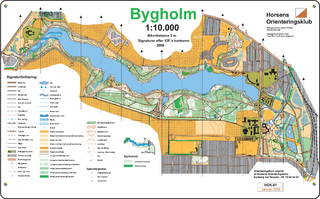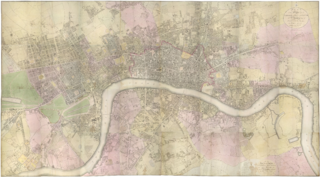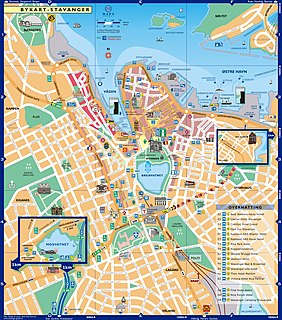
William 'Strata' Smith was an English geologist, credited with creating the first detailed, nationwide geological map of any country. At the time his map was first published he was overlooked by the scientific community; his relatively humble education and family connections prevented him from mixing easily in learned society. Financially ruined, Smith spent time in debtors' prison. It was only late in his life that Smith received recognition for his accomplishments, and became known as the "Father of English Geology".

George Vertue was an English engraver and antiquary, whose notebooks on British art of the first half of the 18th century are a valuable source for the period.

Augustus Heinrich Petermann was a German cartographer.

The Great Trigonometrical Survey was a project which aimed to survey the entire Indian subcontinent with scientific precision. It was begun in 1802 by the British infantry officer William Lambton, under the auspices of the East India Company. Under the leadership of his successor, George Everest, the project was made the responsibility of the Survey of India. Everest was succeeded by Andrew Scott Waugh and after 1861 the project was led by James Walker, who oversaw its completion in 1871.

Ralph Agas was an English land surveyor and cartographer. He was born at Stoke-by-Nayland, Suffolk, in about 1540, and lived there throughout his life, although he travelled regularly to London. He began to practise as a surveyor in about 1566, and has been described as "one of the leaders of the emerging body of skilled land surveyors".
The history of cartography traces the development of cartography, or mapmaking technology, in human history. Maps have been one of the most important human inventions for millennia, allowing humans to explain and navigate their way through the world. The earliest surviving maps include cave paintings and etchings on tusk and stone, followed by extensive maps produced by ancient Babylon, Greece and Rome, China, and India. In their most simple form maps are two dimensional constructs, however since the age of Classical Greece maps have also been projected onto a three-dimensional sphere known as a globe. The Mercator Projection, developed by Flemish geographer Gerardus Mercator, was widely used as the standard two-dimensional projection of the earth for world maps until the late 20th century, when more accurate projections were formulated. Mercator was also the first to use and popularise the concept of the atlas as a collection of maps.

An orienteering map is a map specially prepared for use in orienteering competitions. It is a topographic map with extra details to help the competitor navigate through the competition area.

Richard Horwood was a surveyor and cartographer. He is mainly remembered for his large-scale plan of London and its suburbs published in 32 sheets between 1792 and 1799. He also published a plan of Liverpool in six sheets in 1803.

A city map is a large-scale thematic map of a city created to enable the fastest possible orientation in an urban space. The graphic representation of objects on a city map is therefore usually greatly simplified, and reduced to generally understood symbology.
George Lily was an English Roman Catholic priest, humanist scholar, biographer, topographer and cartographer.
George Gauld (1731–1782) was a British military engineer, artist, cartographer, geographer and surveyor.
The Visscher panorama is an engraving by Claes Visscher (1586-1652) depicting a panorama of London. It shows an imagined view of London in around 1600. The engraving was first published in Amsterdam in 1616, with the title "Londinum Florentissima Britanniae Urbs Toto Orbe Celeberrimum Emporiumque".

The "Copperplate" map of London is an early large-scale printed map of the City of London and its immediate environs, surveyed between 1553 and 1559, which survives only in part. It is the earliest true map of London. The original map was probably designed for hanging on a wall, and is believed to have measured approximately 3 feet 8 inches (112 cm) high by 7 feet 5 inches (226 cm) wide. No copies of the printed map itself are known to have survived; but between 1962 and 1997 three of the original engraved copper printing-plates – from a probable total of 15 – were identified. Although only a fragmentary portion of the map is known, the three plates cover the greater part of the built-up heart of the City of London.

Pietro Coppo was an Italian geographer and cartographer who wrote a description of the entire world as known in the 16th century, accompanied by a set of systematically arranged maps, one of the first rutters and also a precise description of the Istrian Peninsula, accompanied by its first regional map.
Thomas Harman was an English writer best known for his seminal work on beggars, A Caveat or Warning for Common Cursitors.
Mary Ann Rocque, born Mary Ann Scalé, was a cartographer in 18th-century London. Her booklet titled A Set of Plans and Forts of America (1765) included two of the earliest published maps of the city of Albany, New York and also celebrated British victories over the French in North America.

Elisha Kirkall (c.1682–1742) was a prolific English engraver, who made many experiments in printmaking techniques. He was noted for engravings on type metal that could be set up with letterpress for book illustrations, and was also known as a mezzotint artist.

View of Venice, also known as the de' Barbari Map, is a monumental woodcut print showing a bird's-eye view of the city of Venice from the southwest. It bears the title and date "VENETIE MD". It was printed from six wooden blocks designed from 1498 to 1500 by Jacopo de' Barbari, and then published in late 1500 by the Nuremberg publisher Anton Kolb on six large sheets of paper, each measuring about 66 cm × 99 cm, to create a composite image measuring approximately 135 cm × 280 cm. The individual sheets of paper were the largest produced in Europe up to that time.
Silver Street was a street in London. It ran from the north end of Noble Street at Falcon Square to Wood Street. It originated in medieval times, and is one of the streets shown on a map known as the "Woodcut map of London" or the "Agas" map, which survives in a 17th-century version.













